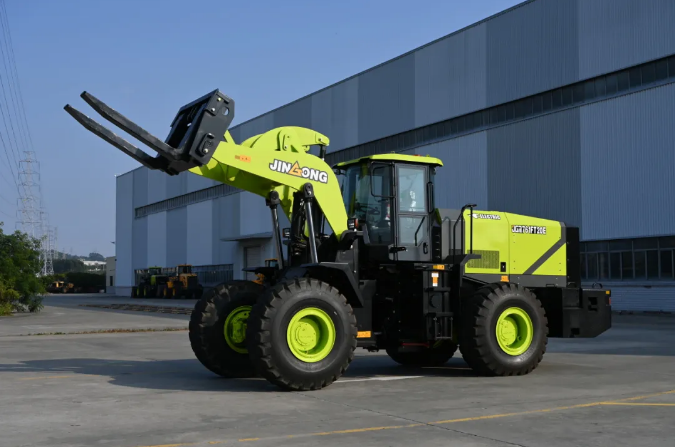The Evolution of Backhoe Excavators: From Manual Labor to Cutting-Edge Machinery
The Evolution of Backhoe Excavators: From Manual to Modern Machines
Table of Contents
1. Introduction to Backhoe Excavators
2. A Brief History of Excavation Tools
3. The Era of Manual Excavation Tools
4. Mechanical Advances in Excavation Technology
5. Key Components of Modern Backhoe Excavators
6. Advantages of Modern Backhoe Excavators
7. Applications of Backhoe Excav
Jun 09,2025

The Evolution of Backhoe Excavators: From Manual to Modern Machines
Table of Contents
- 1. Introduction to Backhoe Excavators
- 2. A Brief History of Excavation Tools
- 3. The Era of Manual Excavation Tools
- 4. Mechanical Advances in Excavation Technology
- 5. Key Components of Modern Backhoe Excavators
- 6. Advantages of Modern Backhoe Excavators
- 7. Applications of Backhoe Excavators in Construction
- 8. Future Trends in Backhoe Excavator Technology
- 9. Conclusion
- 10. Frequently Asked Questions (FAQs)
1. Introduction to Backhoe Excavators
Backhoe excavators serve as indispensable tools in modern construction and engineering fields. They combine the functionality of a tractor, a shovel, and a backhoe, allowing operators to perform various tasks efficiently. This article delves into the evolution of backhoe excavators, highlighting their transition from rudimentary manual labor tools to sophisticated machinery equipped with advanced technology.
2. A Brief History of Excavation Tools
The history of excavation tools dates back thousands of years. Early civilizations employed simple implements made of wood and stone to dig and move earth. The invention of the wheel marked a significant milestone, leading to the development of more complex machinery. Over time, innovations such as steam power and later internal combustion engines revolutionized excavation.
2.1 The Dawn of Mechanical Excavation
The late 19th century witnessed the birth of mechanical excavation devices. Steam shovels introduced a new era in construction, enabling workers to move vast amounts of dirt and rock more quickly than ever before. However, these machines were large, cumbersome, and limited in their versatility.
3. The Era of Manual Excavation Tools
Before the advent of backhoe excavators, manual excavation tools dominated the industry. Workers relied on shovels, pickaxes, and wheelbarrows to complete digging tasks. The labor-intensive nature of manual excavation limited project timelines and increased labor costs.
3.1 Limitations of Manual Tools
Manual tools required significant physical effort and could be inefficient for large-scale projects. Workers faced fatigue, and the risk of injury was high due to repetitive strain and heavy lifting. Furthermore, adverse weather conditions could halt work, causing delays in project completion.
4. Mechanical Advances in Excavation Technology
The introduction of mechanical excavation tools marked a turning point in the industry. The first backhoe excavators emerged in the mid-20th century, combining the advantages of traditional shovels with the power of machinery.
4.1 The Birth of the Backhoe
In the 1950s, manufacturers began producing backhoe loaders equipped with a front loader bucket and a rear digging arm. These machines offered versatility, allowing operators to switch between loading and excavating with ease. This innovation significantly reduced the time and labor required for construction projects.
4.2 Technological Innovations
As technology advanced, backhoe excavators underwent significant enhancements. Hydraulic systems improved the lifting and digging capabilities, making these machines more powerful and efficient. Operators gained better control over excavation depth and precision, leading to improved accuracy in construction tasks.
5. Key Components of Modern Backhoe Excavators
Modern backhoe excavators are composed of several critical components that work together seamlessly to enhance performance.
5.1 The Excavator Arm
The excavator arm, or boom, is responsible for lifting and lowering the bucket. Hydraulic cylinders power the arm's movement, allowing for precise control.
5.2 The Bucket
The bucket is the primary tool for digging and scooping material. Different bucket designs are available for various tasks, including trenching, grading, or grabbing.
5.3 The Loader
The front loader assists in loading materials into trucks or moving earth around the job site. This dual functionality makes backhoe excavators highly versatile.
5.4 The Chassis
The chassis is the machine's structural foundation, housing the engine and hydraulic systems. A robust chassis ensures stability and durability during operations.
6. Advantages of Modern Backhoe Excavators
The evolution from manual to modern backhoe excavators has brought numerous advantages to the construction industry.
6.1 Increased Efficiency
Modern backhoe excavators can perform tasks much faster than manual labor, reducing project timelines significantly. This efficiency translates into cost savings and greater productivity.
6.2 Enhanced Precision
With advanced hydraulic systems and controls, operators can achieve greater accuracy in their digging and loading tasks. This precision minimizes material waste and ensures that projects meet exact specifications.
6.3 Operator Comfort and Safety
Today’s backhoe excavators are designed with operator comfort in mind, featuring ergonomic controls and climate-controlled cabs. Enhanced safety features, such as rollover protection and improved visibility, also protect operators from potential hazards.
7. Applications of Backhoe Excavators in Construction
Backhoe excavators have a wide range of applications in the construction industry.
7.1 Earthmoving
These machines excel at moving large amounts of earth quickly, making them essential for grading sites and digging foundations.
7.2 Utility Installation
Backhoe excavators are frequently used for installing utility lines, including water, gas, and electrical systems. Their ability to dig trenches efficiently is invaluable in these projects.
7.3 Landscaping and Site Preparation
In landscaping projects, backhoe excavators prepare sites for planting, shaping land contours, and removing debris.
8. Future Trends in Backhoe Excavator Technology
As technology continues to advance, so does the potential for innovation in backhoe excavators.
8.1 Automation and Robotics
The future of backhoe excavators may involve automation and robotics, allowing machines to perform tasks with minimal human intervention. This trend promises to enhance efficiency and safety on construction sites.
8.2 Eco-Friendly Innovations
With growing environmental concerns, manufacturers are focusing on producing eco-friendly backhoe excavators that minimize fuel consumption and reduce emissions.
8.3 Smart Technology Integration
Smart technology, including GPS and telematics, is being integrated into backhoe excavators for improved monitoring and management. This technology allows operators to track machine performance, optimize fuel efficiency, and enhance maintenance schedules.
9. Conclusion
The evolution of backhoe excavators reflects the broader advancements in construction technology. From humble beginnings as manual tools, they have transformed into powerful, versatile machines that streamline excavation tasks. As we look to the future, ongoing innovations in automation, eco-friendliness, and smart technology will continue to shape the role of backhoe excavators in the construction industry.
10. Frequently Asked Questions (FAQs)
What is a backhoe excavator used for?
A backhoe excavator is used for tasks such as digging, trenching, and material handling. It is a versatile machine that can operate in various construction applications.
How does a backhoe excavator work?
A backhoe excavator operates using hydraulic systems to power its boom, arm, and bucket. The operator controls these components to perform tasks such as digging and loading efficiently.
What are the key components of a backhoe excavator?
The key components include the excavator arm (or boom), bucket, loader, and chassis. Each part plays a crucial role in the machine's functionality and performance.
What advancements have been made in backhoe excavators?
Advancements include enhanced hydraulic systems, improved operator comfort and safety features, automation, and smart technology integration for better performance and efficiency.
Are modern backhoe excavators environmentally friendly?
Many modern backhoe excavators are designed to be more environmentally friendly, focusing on reduced fuel consumption and emissions through advanced engineering and technology.











